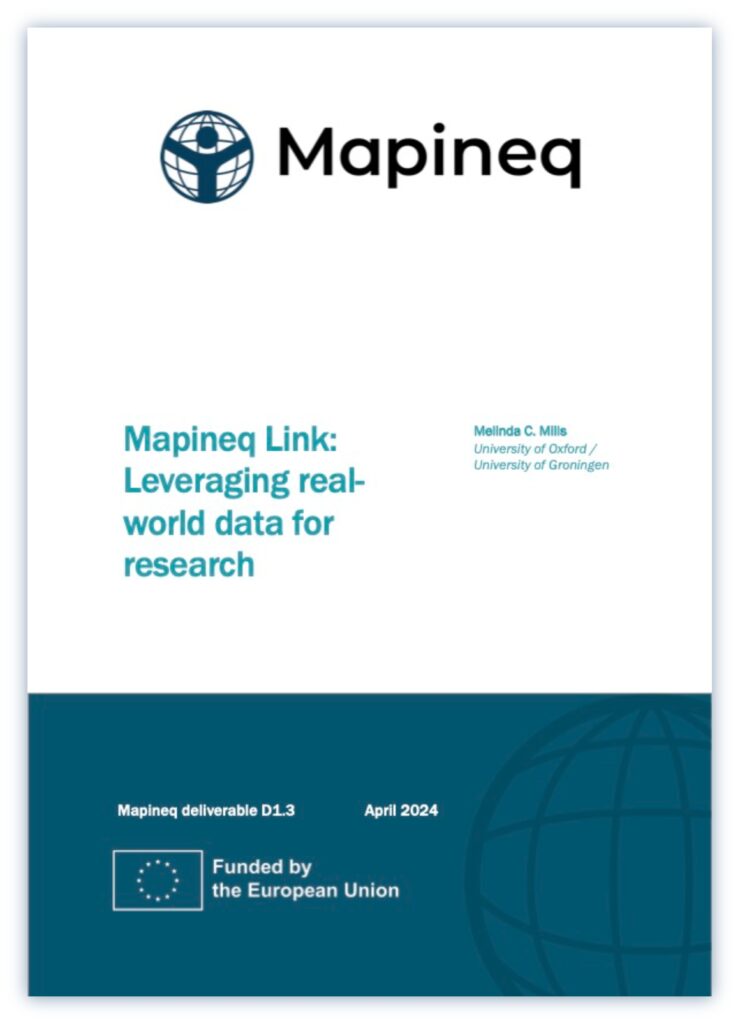Mapineq Link: Leveraging real-world data for research
Real-world data refers to data available from the internet, social media, wearables, patient, health and administrative records, data from commercial companies, internet of things (IoT) and beyond. Data types include social media, professional networking, media services, internet searches, blogs or discussion forums, wearables or body monitors and Apps that measure bodily functions, financial or loyalty cards, mobility sensors to housing prices. The aim of this report is to review the literature and data and provide some examples of real-world data derived from commercial, governmental and non-traditional experiment sources as part of the geospatial Mapineq Link database.
By Melinda Mills.

Researchers have used real-world data to study population and migration estimates, assortative mating, education, employment, financial transactions, physical and mental health, political processes, cultural consumption, built environment to housing and mobility.

This module of the Mapineq Link contains 9 exemplary types of real-world data: (1) social media, (2) professional networking sites, job postings, (3) searches, views, blogs and forums, (4) media services, (5) financial transactions, (6) mobile health, (7) built environment, pollution and neighbourhood, and, (9) internet speed and ICTs.

Advantages and limitations of real-world data are considered. Ethics and legal dimensions are discussed in relation to access to data, data equity, use of web scraping and data from data breaches and re-identification and potential harms to data subjects, with a required balance between misuse and ‘missed use’.

